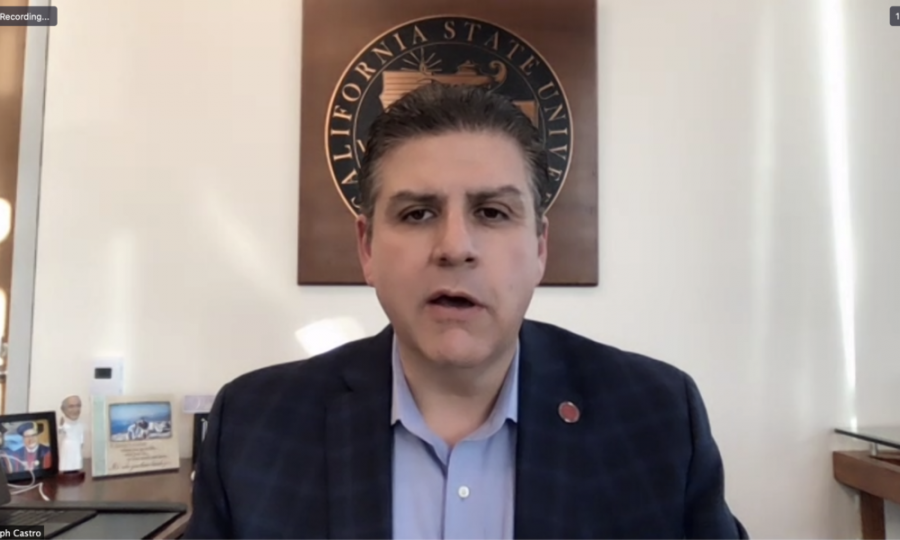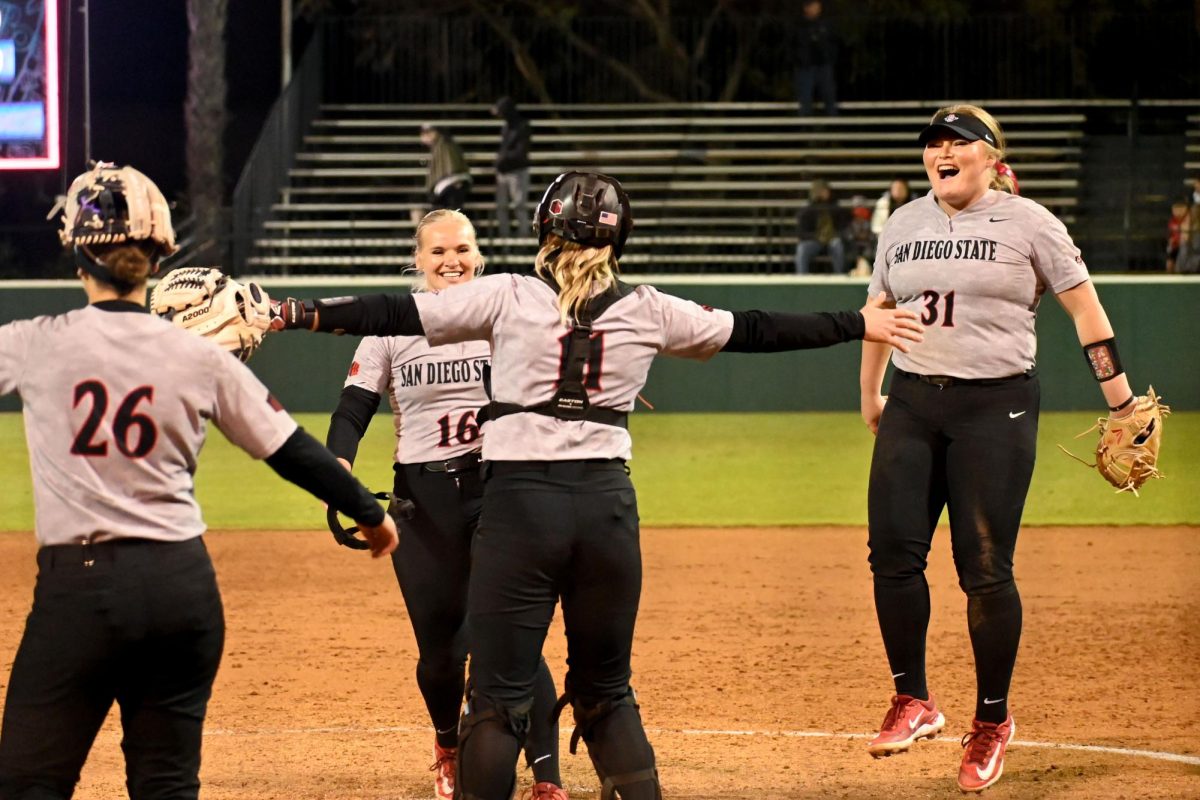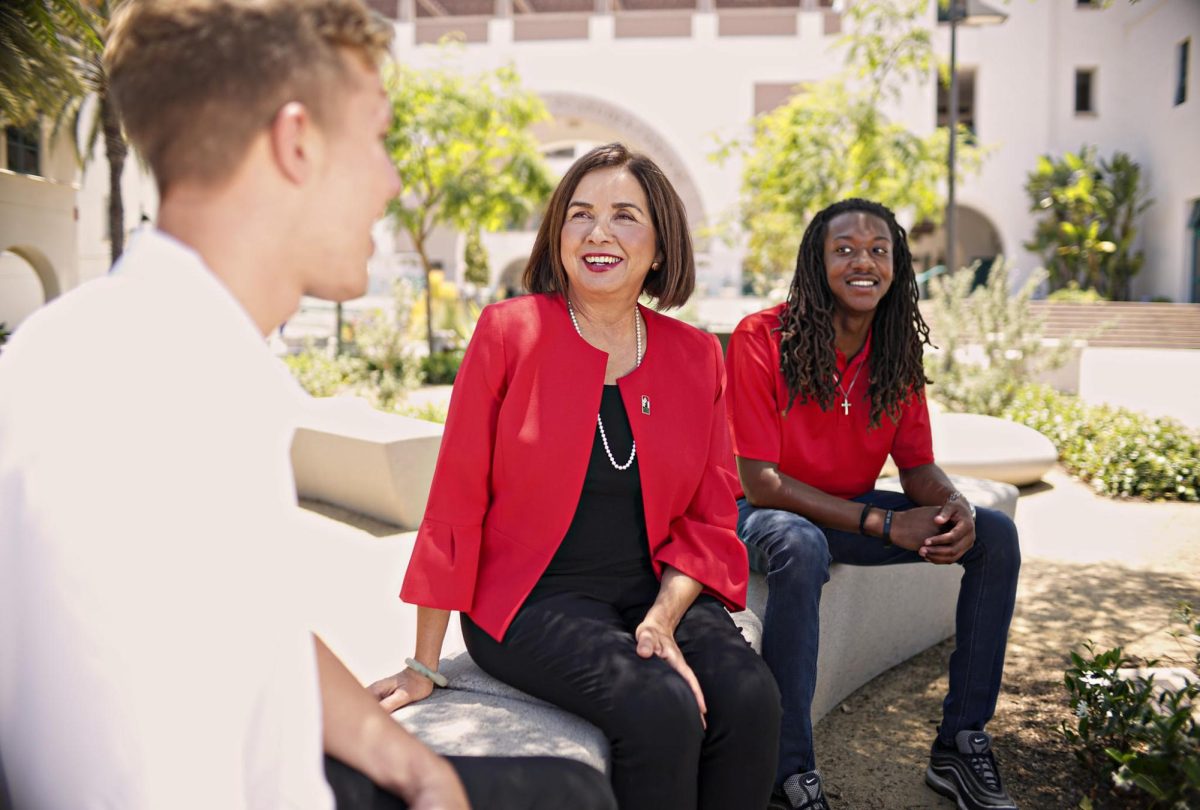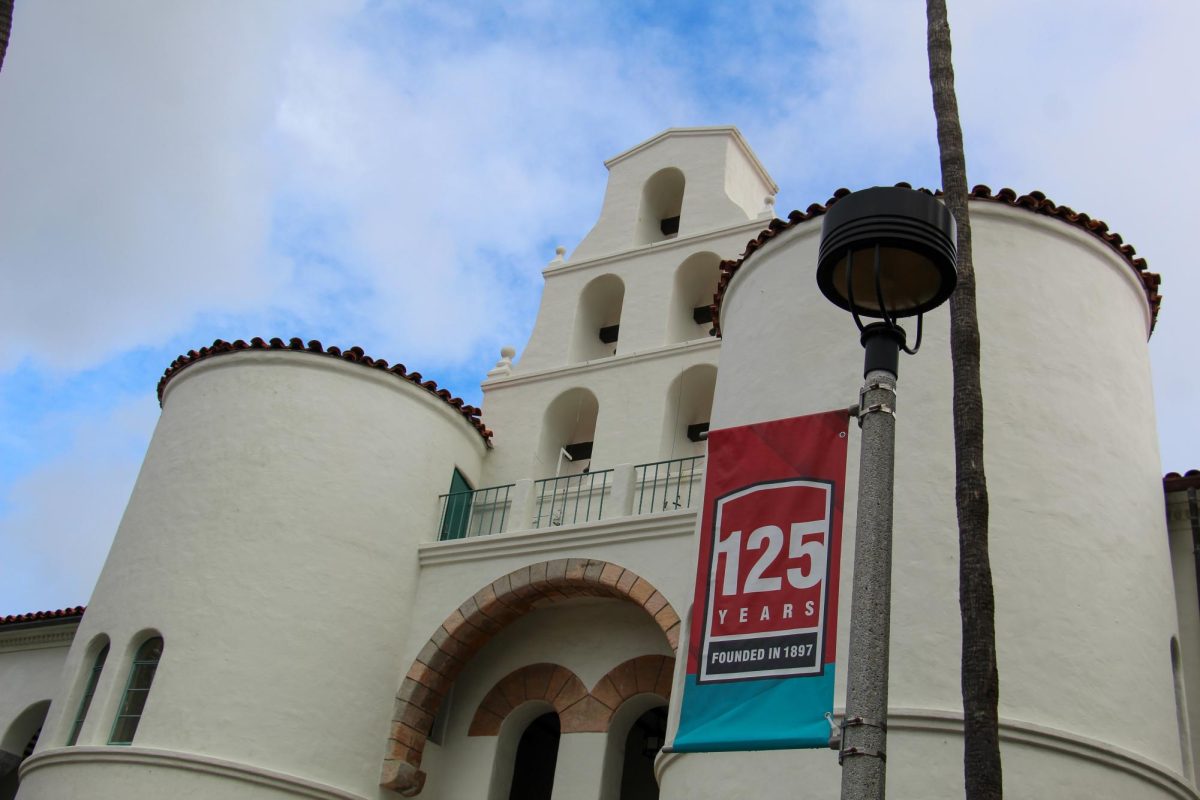While California State University campuses look to return to in-person instruction this fall, vaccinations are likely to not be enforced among students and faculty in an effort to avoid legal issues, Chancellor Joseph I. Castro said Monday.
During a virtual student press conference, Castro discussed his priorities for safely returning to in-person instruction this fall, plans for increasing faculty diversity and budgetary issues for the CSU system.
Despite concerns for student and staff safety, Castro said he cannot require campus-goers to get vaccinated, though he is encouraging everyone to consider making an appointment to help protect their community.
“First and foremost, and I think most appropriate, is to ensure the health and safety of all of you, of all of our students, faculty, staff and communities,” Castro said. “We’re going to do our very best to inspire participation and to keep everyone as safe as possible on the campuses.”
This fall, Castro said he expects to implement a system-wide standard of allowing for at least 50% of courses to be held in person, though campuses will be able to stray from this if they would prefer to offer less under the consideration of health and safety guidelines.
Those returning in person to campus in fall 2021 will likely wear masks and practice social distancing, he maintained.
“We would plan to have the majority of our courses in person in the fall, if health conditions allow for that,” he said. “And that would be as a system, recognizing that there will be variations at the local level depending on the availability of vaccines and the situation that is evolving at the different campuses.”
Students across the 23-campus system have also expressed a desire to defund campus police, an issue that was made clear during last month’s Board of Trustees meeting.
When asked Monday if he plans to reallocate funds from university police departments, Castro told the Daily Forty-Niner that he does not foresee any budget changes regarding police and maintained that “it is important to continue to provide safety” on all campuses. He said he felt that it is important, particularly during a time when campuses are relatively empty, to “provide safety” and “protect assets” like classroom equipment from being stolen.
Across all campuses, however, Castro said that all police chiefs have shown support for the Obama administration’s 21st Century Policing policy that values “guardianship versus policing.”
“What I don’t anticipate is any significant decreases in investment in that area,” Castro said.
As part of the Graduation Initiative 2025, Castro said he intends to focus on closing equity gaps and wants to ensure students, and the CSU as a whole, are able to meet their graduation goals, especially students from underrepresented communities.
“With a strong equity focus, try to get rid of these equity gaps that exist for Pell students and for underrepresented students,” he said.
To increase faculty diversity, Castro said he is looking to establish a partnership with the University of California system to create a “more robust pathway” for CSU graduates to go on to receive additional degrees at UCs. This, he hopes, would inspire these students to come back to the CSU system as faculty members.
“I believe that [faculty diversity] is connected to our success in GI 2025,” Castro said. “We already have a very diverse student body, and while our faculty has become more diverse over the last few years, there’s still more work to do.”
Despite suffering from budget cuts this fiscal year, Castro said he continues to look at hiring faculty and increase outreach to communities of color.
Castro also said he is prioritizing an effort to “inspire our state elected officials to reinvest in the CSU” and plans to “restore” the $299 million in funding that was cut in 2020. From federal and state governments, Castro said he has requested $365 million in additional resources, some of which will help fund the graduation initiative, and $565 million in one-time funds to upgrade campus facilities.
“We’ve been very aggressive in our advocacy,” Castro said. “It’s a bold request, and I am cautiously optimistic that we’re going to be able to inspire our legislative leaders and the governor to fund it.”
Moving forward with face-to-face instruction this fall, Castro feels that the CSU campuses are in need of additional relief, including emergency grants for students, to assist with providing personal protective equipment and technology “to provide cleaning supplies and safe equipment to keep folks safe in the classrooms.”
“Especially as we get ready to hopefully repopulate in the fall, there’ll be lots of expenses that will occur to make sure that happens safely,” he said.
At this time, 13 out of the 23 campuses are operating as vaccination sites, including Long Beach State, which began last week in the Walter Pyramid parking structure.
The other 12 campuses are Fullerton, Bakersfield, Los Angeles, Maritime Academy, Monterey Bay, Northridge, Cal Poly Pomona, Sacramento State, San Diego State, San Francisco State, San Jose State, San Marcos and Stanislaus State.
In an effort to increase transparency and communication, Castro said he will begin to regularly visit the 23 campuses within the CSU system, starting virtually this month. He will move onto in-person visits this fall, he said, “as conditions allow.”
Castro said he strives to shape his decisions by “what students and faculty prefer,” which may include a future of more online classes being offered than there were prior to the coronavirus pandemic.
“We’re going to a new place. We’re not going to go backwards to where we were a year ago,” he said. “We’re gonna go to a new place, and that new place is going to be shaped by what the students prefer and what our faculty and staff prefer.
This article was made available for republication by the Cal State Student Newswire. It originally appeared in the Daily 49er.













